Black Friday 2025 has landed at Analogue Wonderland, bringing some of our biggest film photography deals of the year - from discounted film and cameras to money-saving WonderLab processing offers, exclusive bundles, and festive specials available for a limited time only. Grab a great deal while stocks last!
Recent posts
Shop the article

The Pentax Film Camera Project: What We Know So Far
By Paul McKay
The first time I started to take the Pentax Film Camera Project seriously was August 2023. Of course I'd followed the initial posts, videos, and teasers from the official website as soon as the standalone Pentax Film Project page launched in 2022, but there was little detail to understand how serious they were about launching a brand new Pentax film camera. Then I received a meeting request from the Ricoh Imaging European team (the owners of the Pentax brand since 2011) asking for 'a chat about the film market'. It quickly became apparent that they were deadly serious! UK visits from the project team followed shortly after - as part of a global tour of different analogue communities - and it was all starting to feel very real.
Fast forward to early 2023 and the buzz around the Pentax Film Camera Project is palpable: in Reddit forums, on photowalks and at the recent Photography Show. It has been fuelled by sporadic announcements from the project team and a community of photographers eager for a taste of the future 🤩 This article seeks to weave together the threads of information available, from official sources and the whirlpool of speculation, to offer a comprehensive look at what Pentax is crafting under their 'Pentax Film Project' banner. So let's dive in!
June 2024 update: The Pentax 17 film camera has now arrived! Head to the produce page for more details and to place your order 😍
The Pentax Film Legacy: A Quick Look Back
As we stand on the brink of witnessing a new chapter in film photography with the Pentax Film Camera Project 🤞🏼 it's worth taking a moment to review the analogue history of this iconic brand. Pentax boasts over a century of involvement in photography - beginning as a workshop polishing eyeglass lenses in 1919 called ‘Asahi Kogaku Goshi Kaisha’.
By 1923, Asahi began crafting lenses for cine projectors for another manufacturer, marking its foray into the broader optical domain. The progression of lens-making prowess was evident as the company embarked on a significant partnership in 1932, manufacturing lenses for the Molta Camera Company (later Minolta) for the ‘Arcadia’, a 6.5cms x 9cms folding plate camera. This era of innovation continued into 1933 when Asahi started supplying Konishiroku (present-day Konica Minolta) with a variety of single-element and anastigmat lenses for their Pearl and Pearlette series of cameras.

The Konica Pearl IV (c) Davidde.com
The evolution of Asahi Kogaku Goshi Kaisha reached a milestone in 1938 when it was renamed Asahi Optical Company Limited. This period was marked by its engagement in government contracts for optical instruments, a commitment that lasted until the end of World War II. This was a common practice during the War across the globe, as governments sought to use private companies and manufacturing to gain an edge in battle. Throughout these formative years Asahi laid the groundwork for what would become a legendary name in photography—Pentax.
Pentax's history in the later half of the 20th century is dotted with innovations that have shaped the landscape of photography: from the introduction of the Asahi Pentax, the world's first SLR camera with a through-the-lens (TTL) exposure meter, to the creation of the Spotmatic, one of the most popular cameras of its time lauded for its innovative spot metering capability. These cameras showed Pentax's commitment to innovation and cemented its place in the hearts of many film enthusiasts.
During the seismic shift towards digital, Pentax's allegiance to the film photography community continued past the point of many other camera makers. They continued to produce and support film cameras well into the 21st century. However they weren't immune from the tidal wave of changing consumer preference, and the first of several corporate moves designed for Pentax's survival began in 2006 - a merger with Hoya. The final step came in 2011 as the brand was bought by Ricoh Imaging and merged with their global imaging business.
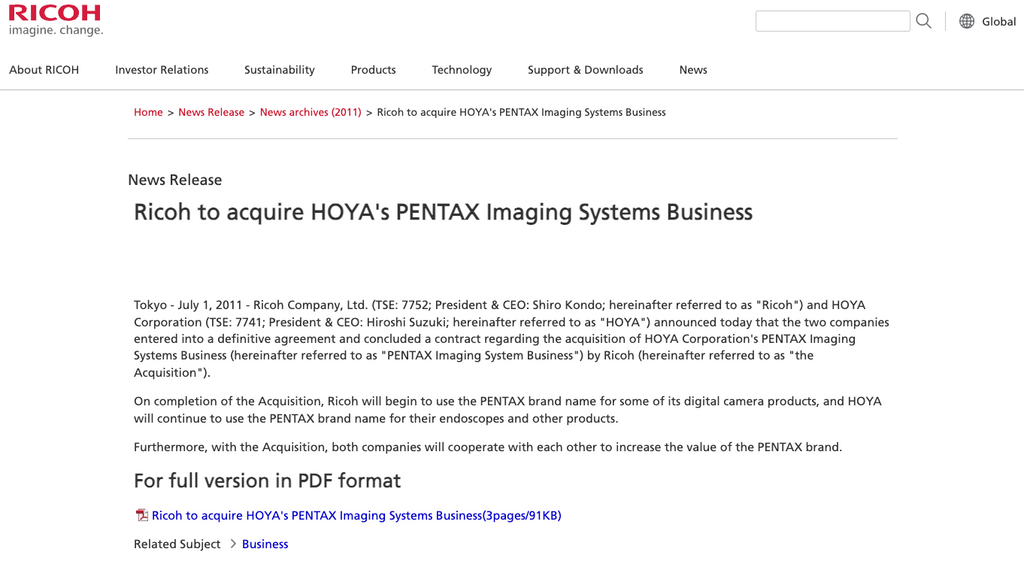
The 2011 announcement of the acquisition
That's the history; now for the future! As whispers of the Pentax Film Camera Project grow louder, there's a palpable sense of excitement, nostalgia, and uncertainty about what's coming. So let's start unpicking (likely) truth from fiction.
The Pentax Film Camera Project: Announcements and Official Details
Since its announcement at the end of 2022, the Pentax Film Camera Project has sparked a whirlwind of excitement and speculation, receiving a wave of support from film camera enthusiasts, industry partners, and students around the globe. "The tremendous support of many people...made us realise the growing popularity of film cameras and analog photography," Takeo Suzuki - one of the Product Designers working on the Pentax Film Project reveals in their latest video, underscoring the burgeoning interest in this analogue revival.
The project, initially surrounded by questions of viability and direction within Ricoh Imaging's management team, has found its footing thanks to the enthusiastic backing and suggestions from the community. Suzuki shares, "We wondered over and again whether we should proceed with this project...It was your support and advice that helped us regain our confidence". This community-driven encouragement has been pivotal, fuelling the team's motivation to push the boundaries of traditional film photography and adapt it for the modern age. While at the same time reassuring the corporate finance team that this direction would reward the investment in R&D with future camera sales...
One of the most intriguing revelations about the project is the decision to design the camera primarily for vertical-format photos, a nod to the pervasive use of smartphones and digital devices in today's visual culture. "When we communicate with each other using smartphones...we basically hold the device in a vertical position," Suzuki explains, highlighting the shift towards vertical-format images in contemporary social media exchanges.

Every smartphone advert since 2014
This approach aims to make film photography more accessible and appealing to younger generations, combining the tactile allure of analogue with the digital habits that shape the modern world's visual language.
Addressing the practical concerns of film photography enthusiasts, the project also introduces the half-size format to double the number of photos per roll, thereby making film photography more cost-effective and appealing for younger audiences. "We believe that this is a very effective solution to reduce the costs involved," Suzuki asserts. Personally I love to see such a strong commitment to breaking down barriers to entry for analogue photography.
The inclusion of electronic-control mechanisms to calculate accurate exposure, as well as as the acclaimed electronic shutter unit, ensures ease of use for beginners while preserving the manual joys of film photography. This blend of automated and manual features signifies a thoughtful balance between convenience and the engaging, hands-on experience of shooting with film. This means that the camera will effectively have auto-exposure - like the Lomography LC-A film camera - with an onboard computer calculating optimal shutter speed and aperture size.
We don't have a confirmed design or images yet, but the choice of models shown in the video is telling: the Ricoh Auto Half and the Pentax Espio Mini.
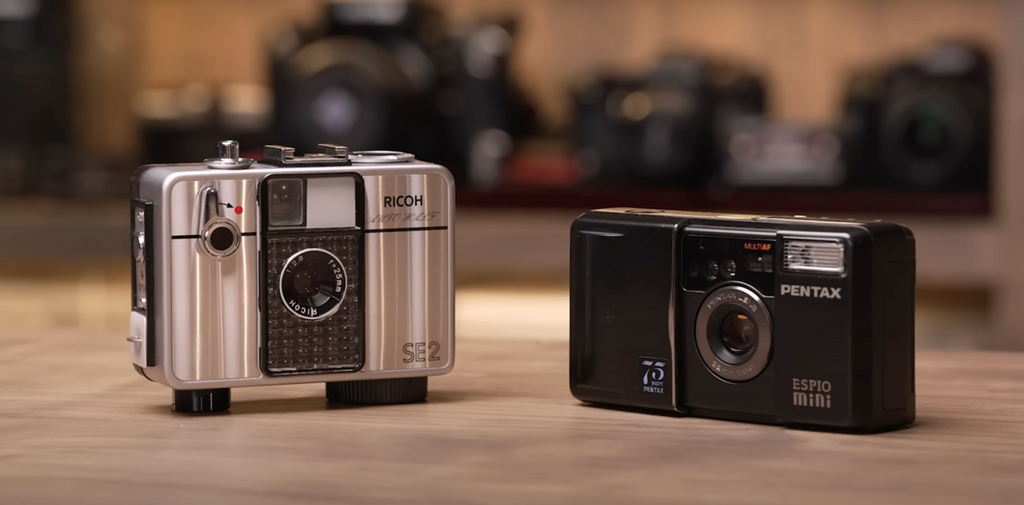
Will the Pentax Film Project look like either of these?
In Suzuki's words, "This is not a camera that can be rated or classified simply in terms of features and functions," but rather, a testament to Pentax's legacy of innovation and its forward-thinking adaptation to the needs and preferences of modern photographers. With early prototypes already bringing joy to those behind the project, the anticipation for the Pentax Film Camera Project's completion is palpable.
"Film photography is coming back!" Suzuki proclaims with a beam. Halleljuh!
Community Speculation and Wishlist
The Pentax Film Camera Project has reignited the excitement for film photography outside of the usual analogue community, and it has also set the stage for a vibrant discourse among long-time film enthusiasts. The announcement and details shared by Takeo Suzuki have sparked a wave of speculation, wishes, and debates across various forums, social media platforms, and photography communities. What makes this project particularly captivating is the blend of nostalgia (Pentax's history!) and innovation (Ricoh's significant R&D resource and knowledge!), aiming to cater to the tactile charm of analogue photography while embracing the digital habits of a younger generation.
The decision to focus on a vertical-format half-frame camera (like the Kodak Ektar H35) has stirred interesting conversations about the evolving nature of photography in a digital age. While some purists will yearn for the traditional landscape orientation and 'full frame' resolution of traditional 35mm film photography, the vertical format's alignment with contemporary content consumption - especially on social media - is a thoughtful bridge between historical film practices and modern visual storytelling. The design team have acknowledged the prevalent use of smartphones - not digital cameras - for photography and how that has affected the cultural adoption of 'portrait' as the prevalent orientation.
Takeo Suzuki also recognises that half-frame is also a fun way to create interesting images. "By placing two photos together in a single image you can create a work of art that can better tell a concept or story. I expect that this will stimulate the creativity of younger photographers and inspire them to capture beautiful photos and produce fine works of art"
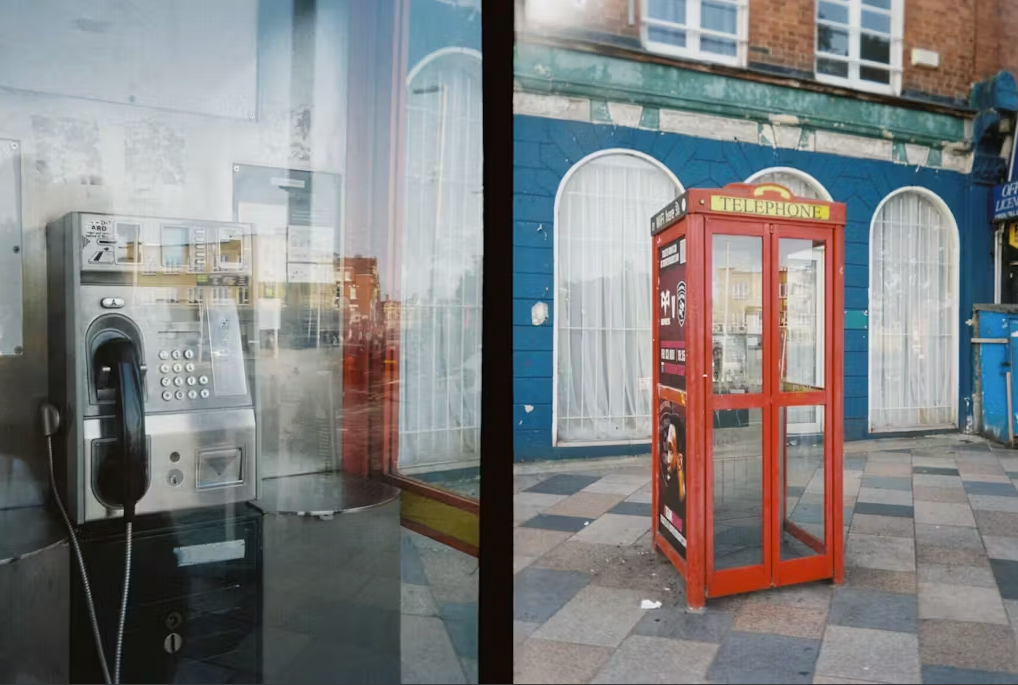
A fantastic image of half-frame creativity by @jan.onfilm
The community's response to the innovative half-frame format highlights a collective eagerness for more accessible and cost-effective film photography experiences. I've seen many folks express excitement over the potential to double the number of exposures per roll, seeing it as a gateway to more experimental and frequent film use. This feature, combined with the project's emphasis on blending electronic controls with manual operations, suggests a camera that could democratise film photography, making it appealing and manageable for everyone who's ever been tempted to pick up a roll of 35mm film.
Anticipation also builds around the camera's expected 'analogue' features, such as the manual zone-focus system and the old-fashioned winding mechanism, promising a user-friendly interface for first-timers. Every camera type has superfans and haters - even controversial models like the Yashica Samurai! - so I'm sure that the final design will split opinions. But that's not a bad thing: it's healthy to have different preferences in a community, and hopefully it will show Pentax the sales opportunity for further models down the line.
As the project nears completion the wishlist from the community continues to grow, ranging from desires for specific lens characteristics inspired by past Pentax masterpieces to hopes for innovative film loading and processing features. The overarching sentiment is one of excitement. And we are all crossing our fingers for a camera that respects the legacy of film photography while breaking new ground. Bringing relevance and joy for future generations of passionate film shooters!
Why It Matters: The Impact of a New Pentax Film Camera
The Pentax Film Camera Project, spearheaded by Takeo Suzuki and his team, feels like a significant leap towards the future of film photography. So it's worth summarising why this project matters, and what it could herald for the future of film photography.
Firstly, I think the project represents a bold statement of confidence in the viability and enduring appeal of film photography. In a world where digital technology dominates the visual arts, the development of a new film camera by a brand as venerable as Pentax sends a powerful message: film is not only alive but thriving and evolving. This initiative could inspire other manufacturers to reconsider their own commitments to film photography, potentially leading to a broader revival of interest and investment in analogue technologies. It's even more promising as it comes so close on the heels of the Harman Phoenix film launch in December 2022.
We also can't forget Lomography's relentless focus on innovation, including their latest Lomomatic 110 film camera. While Lomography's global scale and resources is much less than Ricoh Imaging, they have been consistently supporting film photographers with new products since the 90s! [See: The history and evolution of Lomography]
And to have a photography business of Ricoh's size join them, entering the film market so publicly and so proudly - it's a significant sign of confidence in the global analogue market.
The Pentax Film Camera Project addresses some of the most significant barriers to entry for newcomers to film photography: cost and accessibility. By innovating around the half-size format to double the number of exposures per roll, and integrating electronic controls to simplify operation, Pentax is making film photography more approachable and affordable. This democratisation of film could attract a new generation of photographers to explore the medium, ensuring its continuity and relevance.
I also think that the fact this is modern camera, built by a modern camera company, with spare parts and repairs on hand - is massive! No more eBay roulette or gambling on when a vintage camera will shoot its last film. This should be a solid machine with a long life, which will reassure early buyers that their money will be rewarded with lots of cracking photography.
JUNE 24 UPDATE: yes it does! I'm loving my first photos from the Pentax 17.
The vertical design and half-frame choice will not be for everyone. But it acknowledges the changing habits of photo consumption and sharing, making film photography more relatable and adaptable to modern lifestyles. It's a strategic adaptation that respects the essence of film while making it appealing in a digital age, potentially expanding the film community. And that is good news for everyone!

@flowermoodforyou is a fan: "For a long time, I wanted to have a half-frame camera in order to compose diptychs...You don't want to let it go"
Finally, this project is a real testament to the collaborative spirit between manufacturers and the photography community. The feedback and support from enthusiasts, industry partners, and even retired engineers highlight a collective effort to sustain and enrich the film photography ecosystem. The collaborative approach has assured the project's outcomes and reinforces the sense of community and shared passion that is central to the film photography experience. We all feel this on a day-to-day level - it's one of the best things about working in film - but the Pentax Film Camera is evidence on a global scale!
Looking Ahead: The Future of Film Photography with Pentax
I am more excited every day as Pentax Film Camera Project moves from concept to reality. This venture into the new, with its roots firmly planted in the rich soil of Pentax's legacy, offers a glimpse into a future where film and digital coexist more harmoniously, and big companies and manufacturers see the benefit of investing significant R&D dollars into analogue innovation.
The integration of vertical formats, half-size film formats, and a blend of electronic and mechanical controls speaks to a broader trend: the customisation of traditional photography tools to fit the modern photographer's needs. These innovations by Pentax are showing the way they've reimagined their approach to film photography: one that promises greater accessibility, creativity, and engagement for film photographers. I'm really glad that top brand folk in Ricoh are thinking about these things - it'll make the world of difference to the long-term health of the film photography community.
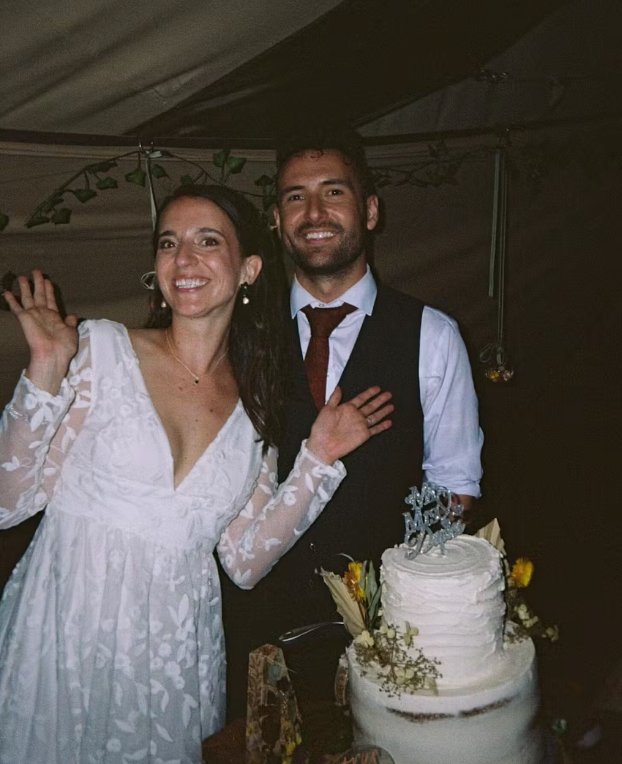
@_Eviedoesit loved shooting on half-frame for her sister's wedding: "Getting 72 pictures is a no brainer too, it's so hard to use up! You gotta keep snapping! My sister was so happy, this is a wedding must have!" A perfect example of the vertical format and the benefits of half-frame.
By daring to launch a new film camera in a predominantly digital age, Pentax is explicitly challenging other manufacturers and the photography community at large to reconsider the value and potential of film photography. "[Suzuki] also wishes that other camera manufactures would follow suit and enter the analogue camera market. I will be very happy if this happens. Please consider my proposal!" It's a call to action that resonates with a growing interest in analogue processes, driving innovation and interest in a field many (naively!) thought was being left behind. And a reality that we deal with in our photo lab every single week 😂
The Pentax Film Camera Project also reminds me of the power of community feedback and collaboration in shaping the future of film photography. We're so used to being the 'left behind' photographers but if we are to take Takeo Suzuki's words at face value then the analogue community was responsible for keeping the project funded during it's tenuous and fragile early life 🥰
I am so thrilled and proud to be able to witness the next era of film photography firsthand.
What features are you most excited about in the new Pentax film camera, and how do you think it will influence your photography?
Ready to dive in?
Keep Reading
View all
Christmas 2025: Shipping & Opening Hours
Christmas 2025 is fast approaching! To make sure your analogue goodies arrive in time, take note of our last shipping dates, plus opening and operating hours over the festive season. We've got everything you need to gift the magic of film photography this Christmas!

Film Photography Christmas Gift Guide 2025: Analogue Wonderland
Capture the magic of Christmas with film - no filters needed. Our 2025 Film Photography Christmas Gift Guide 2025 is packed with thoughtful presents for every type of shooter, from curious beginners to seasoned photographers. Discover film stocks, cameras, and creative accessories that will make this festive season truly memorable.
Subscribe to our newsletter 💌
Sign up for our newsletter to stay up to date on film photography news, sales and events:
Free Tracked Shipping
On all UK orders over £50
Passion For Film
An unbeatable range and an on-site lab
Our Customers Trust Us
Thousands of independent 5* reviews
All Deliveries are Carbon Neutral
Independently audited and verified by Planet
- Opens in a new window.






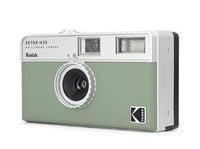

12 Comments -
Bruce • -
Nick Richardson •
← 1 2 3
Sounds like it’s about as innovative as a 1960s Pen half frame. Back to the future! The vertical format wasn’t chosen because it’s like camera phone usage but because that’s the way all half frame cameras are – and there have been many of them over the years. You can’t fit 72 landscape format frames in a 35mm cassette.
And the manual zone focusing isn’t a feature, it’s a cheapskate way of focusing requiring neither expensive reflex nor rangefinder systems. It was the basic focusing method on most of the cheap, bottom end cameras throughout the 60s, 70s and 80s.
I suppose it’s good that a new film camera with years of support is being considered but it’s just a pity it’s something as basic as a “happy snapper’s” camera of the kind rejected over the years by most photography enthusiasts.
I would love to see them produce the Pentax Spotmatic F again – albeit an updated version. But keep the simplicity of the spot meter, and manual controls.
Just like Leica have returned to the M6 and Nikon have produced the Zf, which is a digital version of the Nikon F FE and FM heritage.